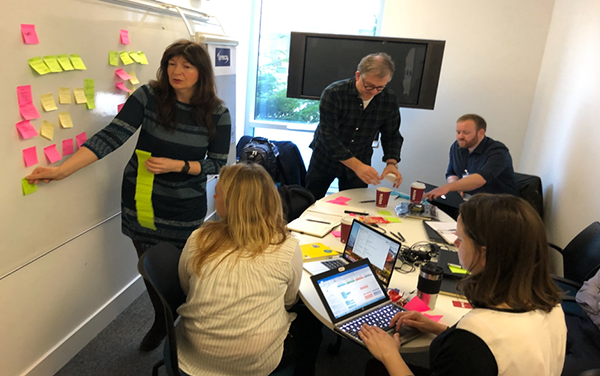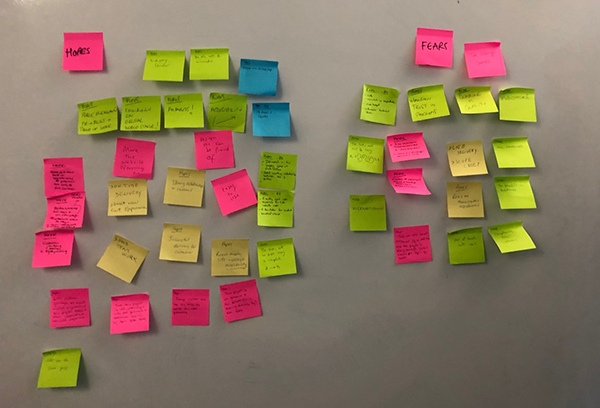Making a new and accessible future for the capital city
Late last year we set out on a journey to create a new and simplified digital platform for our customers.
Amidst a number of time and budgetary constraints, it was essential that we built on the successful parts of previous edinburgh.gov.uk iterations, rather than reinventing the wheel.
We defined the key objectives, drivers for change and business case, and then sought internal buy-in.
From there we started with a short discovery phase, reviewing key internal stakeholder and customer needs to arrive at a brief. In addition to common web standards, we new we also wanted to adhere to the standards of the Government Digital Service (GDS) and Scottish Digital Office.
The discovery phase began with a ‘Design Start Meeting’, which is part of the process used by design agency Spacecraft to define business requirements and the vision for a creative project.
We brought together our key partners: CGI for I.T. service delivery, Jadu as our digital platform provider, Spacecraft and our stakeholders, including our web and customer services teams. We started off with the basic discovery to define fundamental needs.
This included:
-
Discussing ‘Hopes and Fears’ by ‘BrainSwarming’ potential opportunities and blockers
-
Using customer data to drive need
-
Working out different ways of arriving at our first design brief

'Minimum viable' product
One of the core outcomes of our initial planning session was what we decided to launch as part of the first delivery. As the project is being delivered in a series of major sprints, the council made a business decision to develop the basic structure and top-level user journeys and launch a new beta.edinburgh.gov.uk that could be iterated based on user feedback.
We wanted to get something delivered in a short timeframe, so decided not to migrate the bulk of content from the existing site. Instead, we discussed how to prioritise areas of the website and decided to focus on those most valuable for customers. We’ll then create user needs and stories and build a ‘minimum viable’ product, from which we can begin real public user research and testing.

The next step is defining user needs and creating a set of personas and user stories so we can begin mapping our user journey and build the full design brief. We'll then use InVision (a digital product design tool) to create an ALPHA of the new design so we can iterate towards building a BETA in code.